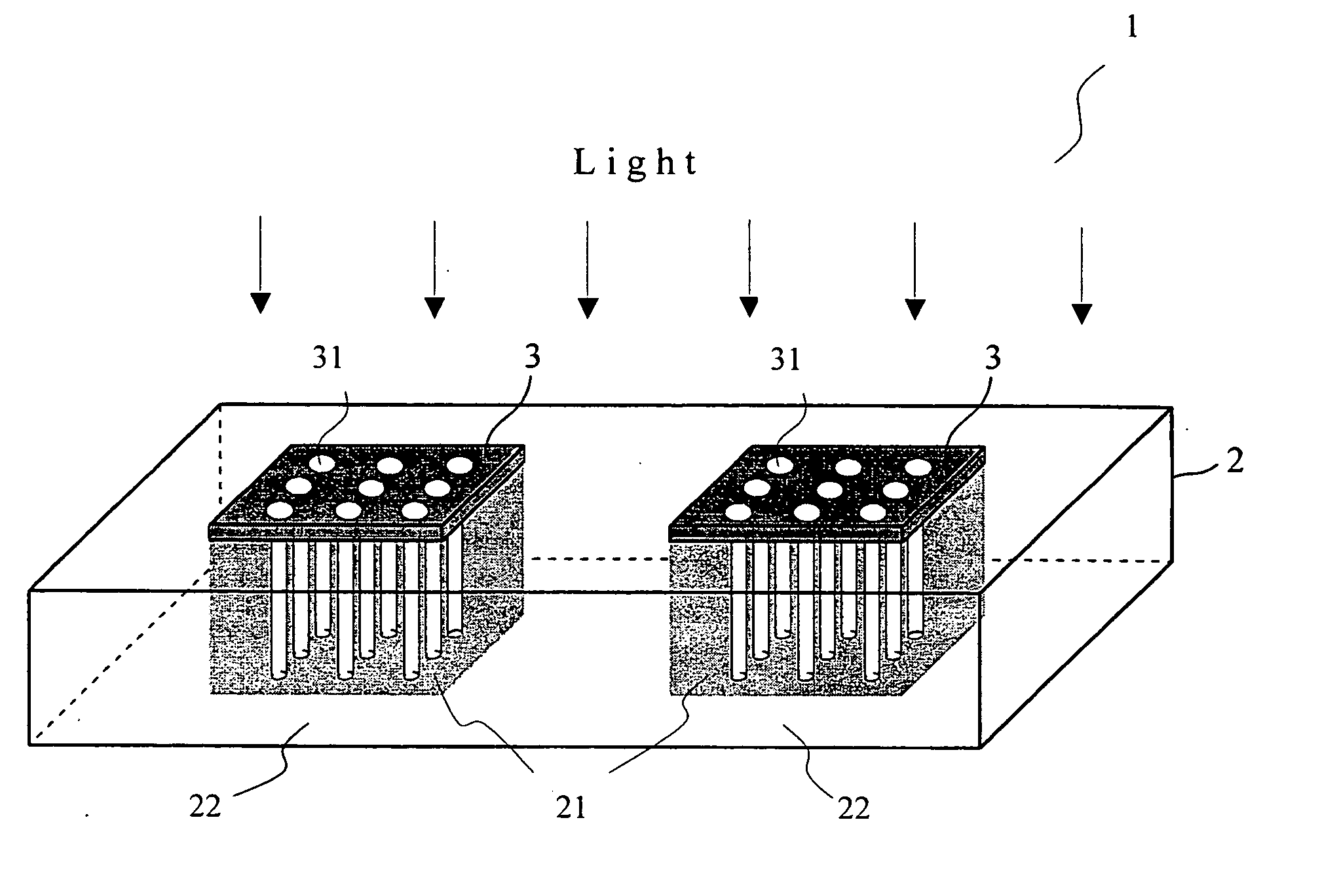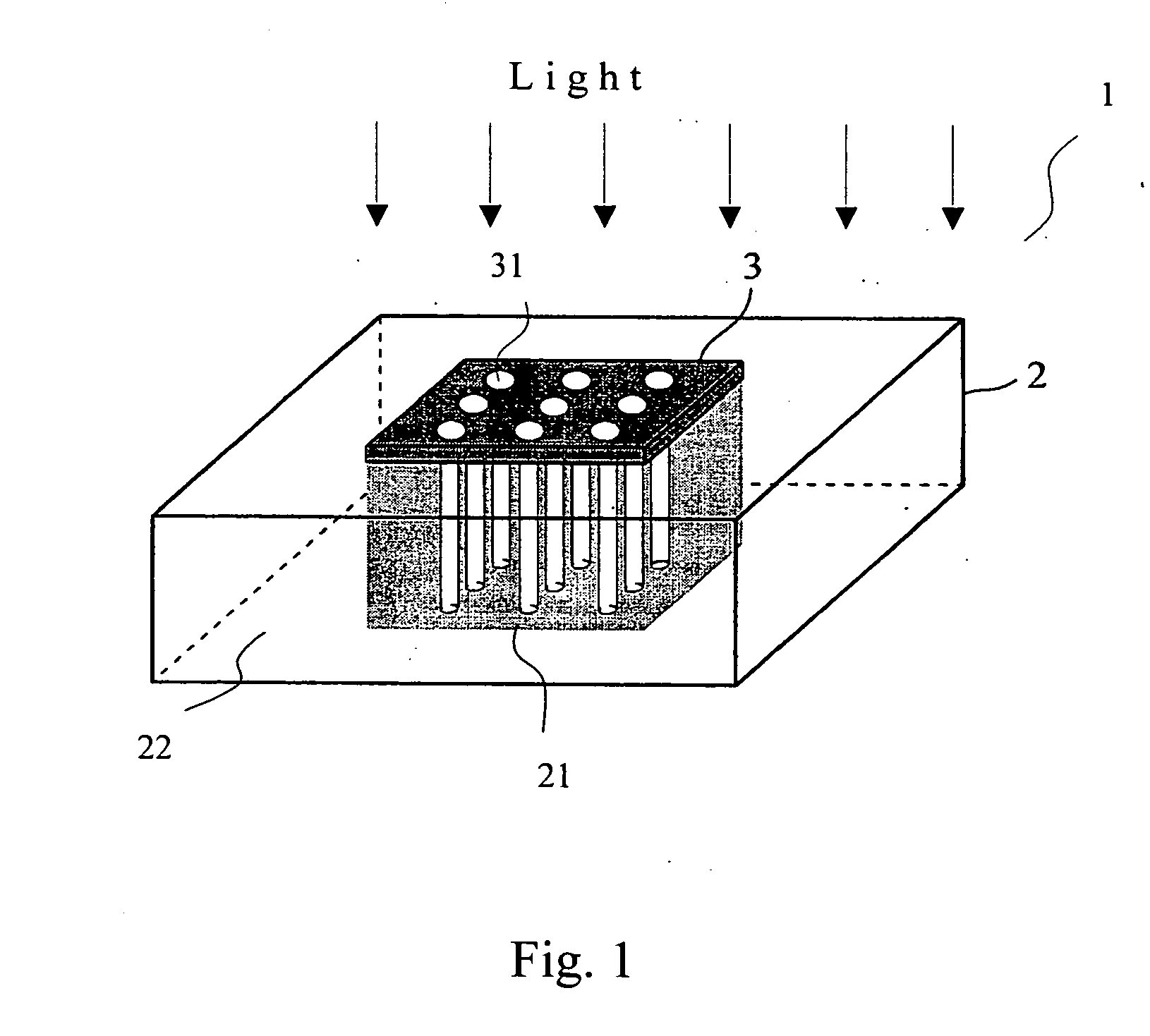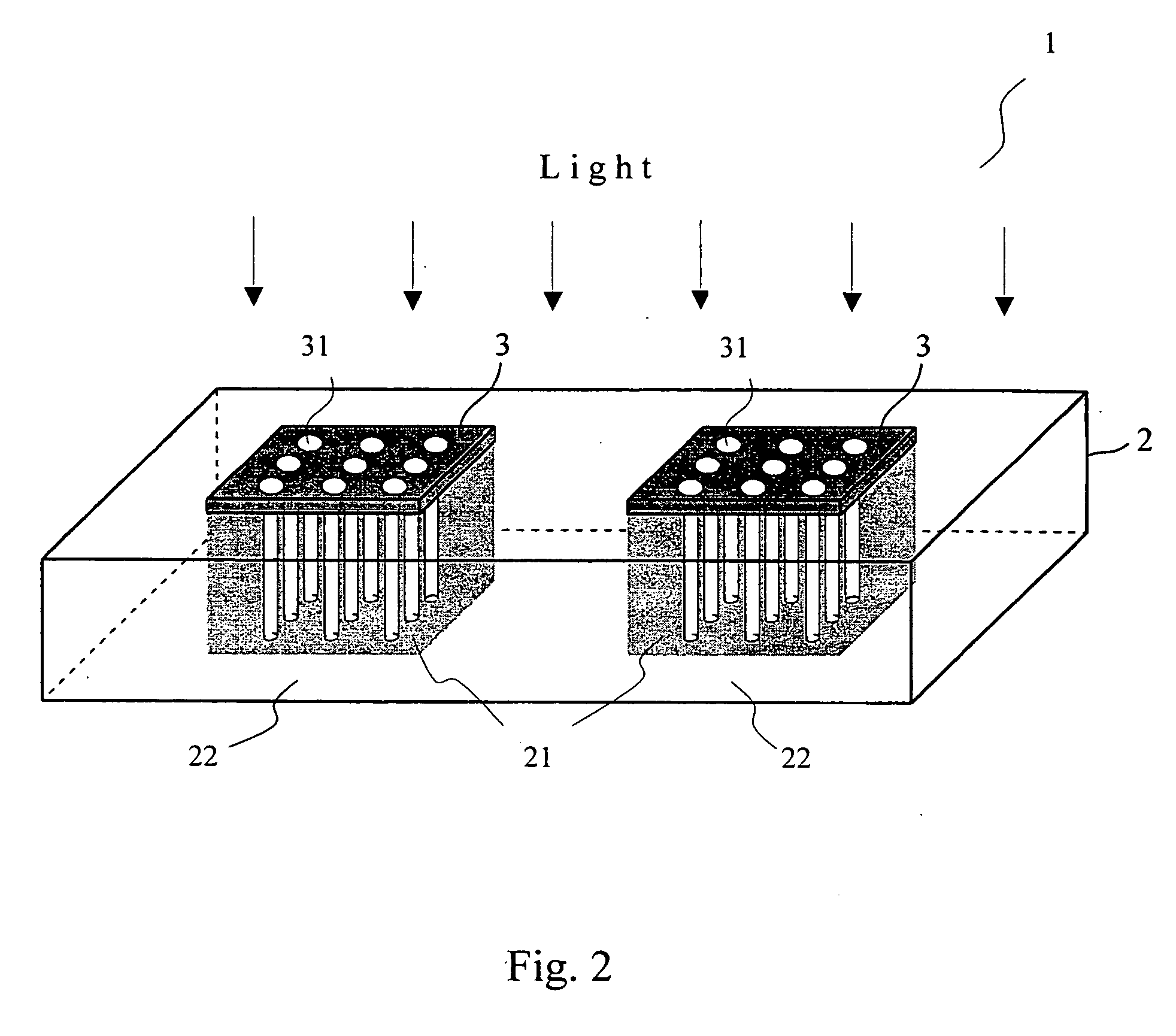Method and device for cultivating and maintaining aquatic crustaceans
a technology for cultivating and maintaining aquatic crustaceans, applied in pisciculture, aquaria, climate change adaptation, etc., can solve the problems of marine shrimp being cannibalized by other shrimp during molting, bringing pollution and havoc to the ecosystem, and causing so as to prevent the death of aquatic crustaceans, increase the yield per unit floor area, and induce aquatic
- Summary
- Abstract
- Description
- Claims
- Application Information
AI Technical Summary
Benefits of technology
Problems solved by technology
Method used
Image
Examples
embodiment 1
ultivating and Maintaining Device (I) Providing the Water Body Having at Least one Effective Resting and / or Hiding Area for Aquatic Crustaceans
[0028] In the nature, many aquatic crustaceans, such as shrimp, live in a habitat environment with bright-dark alternating or contrasting lighting effects. The present invention provides an aquatic crustaceans cultivating and maintaining device 1 having such an environment as shown in FIG. 1 by creating an effective resting and / or hiding area 21 having bright-dark alternating and contrasting lighting in an area of the culture tank 2. In such an environment, shrimp may live in high densities without attacking and cannibalizing each other. In addition, the evenly luminous zone in the culture tank 2 is the non-effective habitat area 22, which is arranged to provide shrimp with soft shell after molting a place to stay away from the attack of other shrimp. A method of creating an effective resting and / or hiding area 21 having bright-dark alternati...
embodiment 2
ultivating and Maintaining Device (II) Providing the Water Body Having an Effective Resting and / or Hiding Area with Bright-Dark Alternating and Contrasting Lighting Effect
[0029]FIG. 3 shows another device 1′ for cultivating and maintaining aquatic crustaceans having bright-dark alternating and contrasting light effect, wherein grids 4 marked on the bottom of culture tank 2 is created using dark-colored adhesive tape or paint. Lights projecting onto the grids 4 marked on the bottom of culture tank 2 will reflect in the water body. As such, the bright-dark alternating and contrasting lighting effect will be generated to attract the habitation of shrimp. Furthermore, any form of shelter structures may be further provided onto the aforesaid grids 4, so as to provide the shrimp tactile sensations by their touching the aforesaid shelter structures when they move around, and to attract their habitation inside the effective habitat area without cannibalizing each other. As a result, the yie...
embodiment 3
[0031]FIG. 4 shows the lateral view of a multi-layered shrimp culture system 5 consisting of a plurality of vertically-integrated cultivating and maintaining devices 1 or 1′ of the present invention. In this embodiment, only three layers of cultivating and maintaining device 1 or 1′ are shown, while in actual operation, there may be ten layers of devices or more. The arrows in the figure illustrate the flow direction; this culture system 5 has water inlets 6 and water outlets 7. Besides the cultivating and maintaining device 1 or 1′, the multi-layered culture system 5 of the present invention may further include a first-stage aeration and physical filtering system 8, physical filtering equipment 9, second-stage aeration 10, biochemical filtering equipment 11, and water delivery motor 12 to construct a complete multi-layered culture system 5. Through the design of multi-layered culture system 5, the culture density per unit area is greatly increased, so is th...
PUM
 Login to View More
Login to View More Abstract
Description
Claims
Application Information
 Login to View More
Login to View More - R&D
- Intellectual Property
- Life Sciences
- Materials
- Tech Scout
- Unparalleled Data Quality
- Higher Quality Content
- 60% Fewer Hallucinations
Browse by: Latest US Patents, China's latest patents, Technical Efficacy Thesaurus, Application Domain, Technology Topic, Popular Technical Reports.
© 2025 PatSnap. All rights reserved.Legal|Privacy policy|Modern Slavery Act Transparency Statement|Sitemap|About US| Contact US: help@patsnap.com



